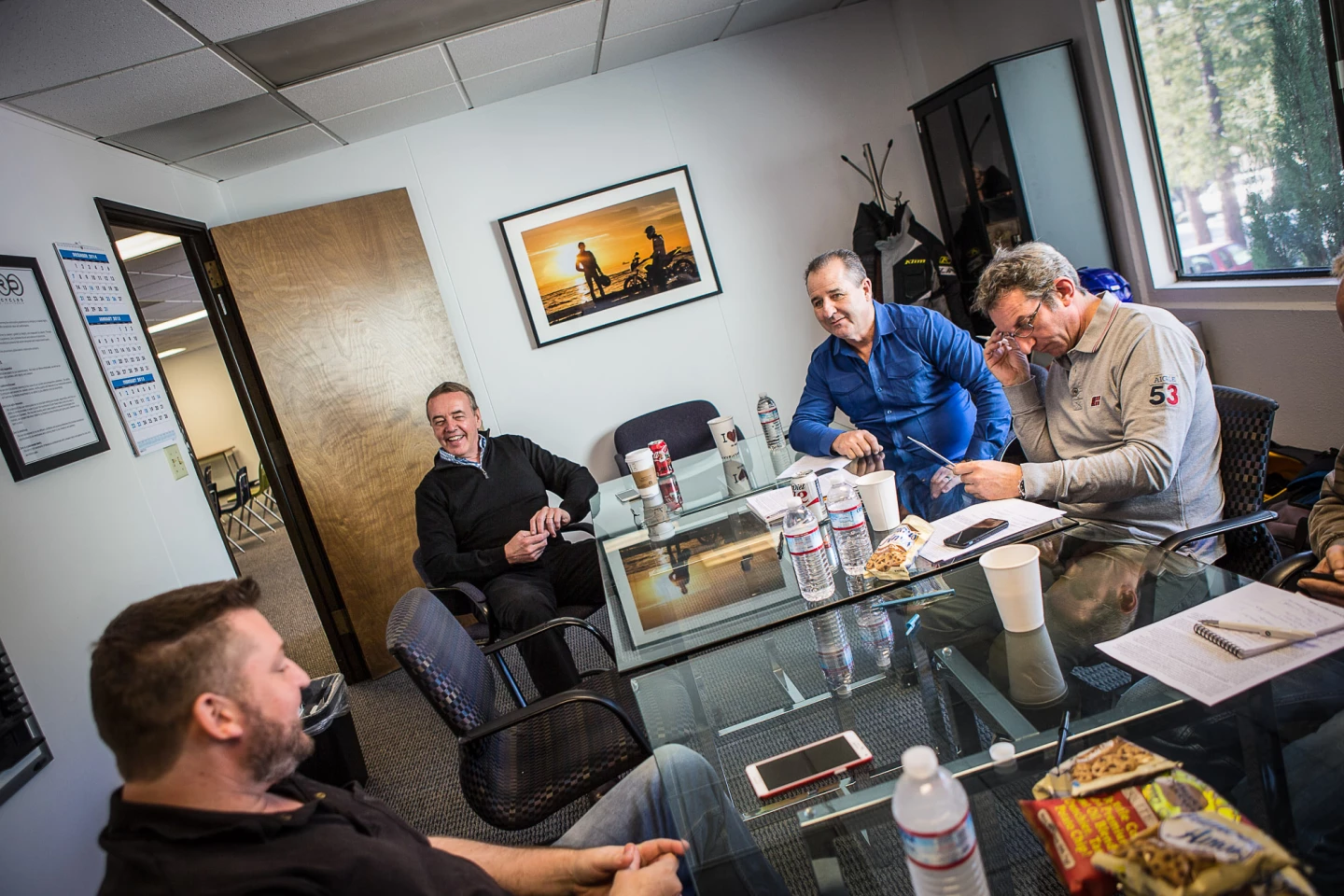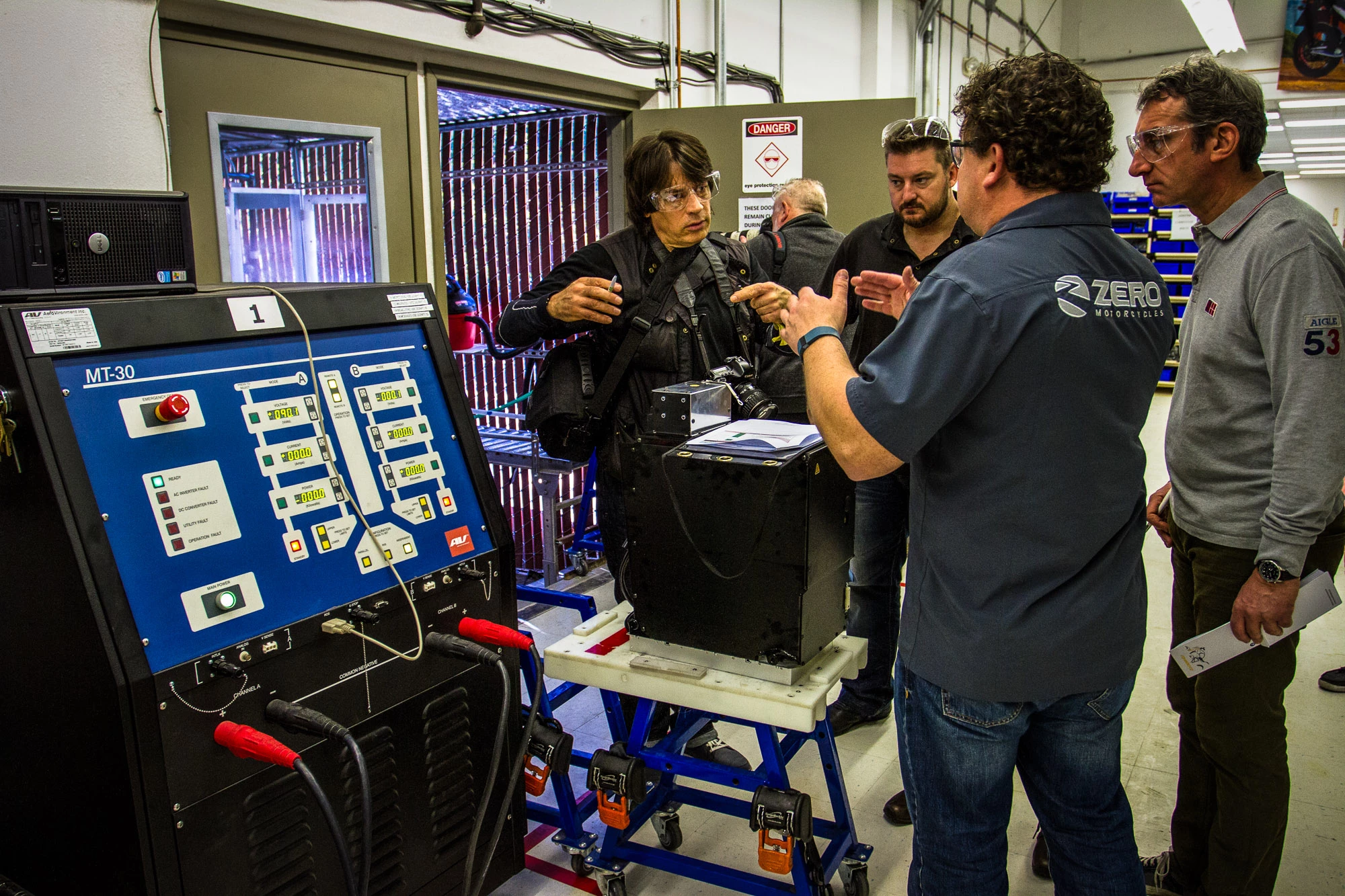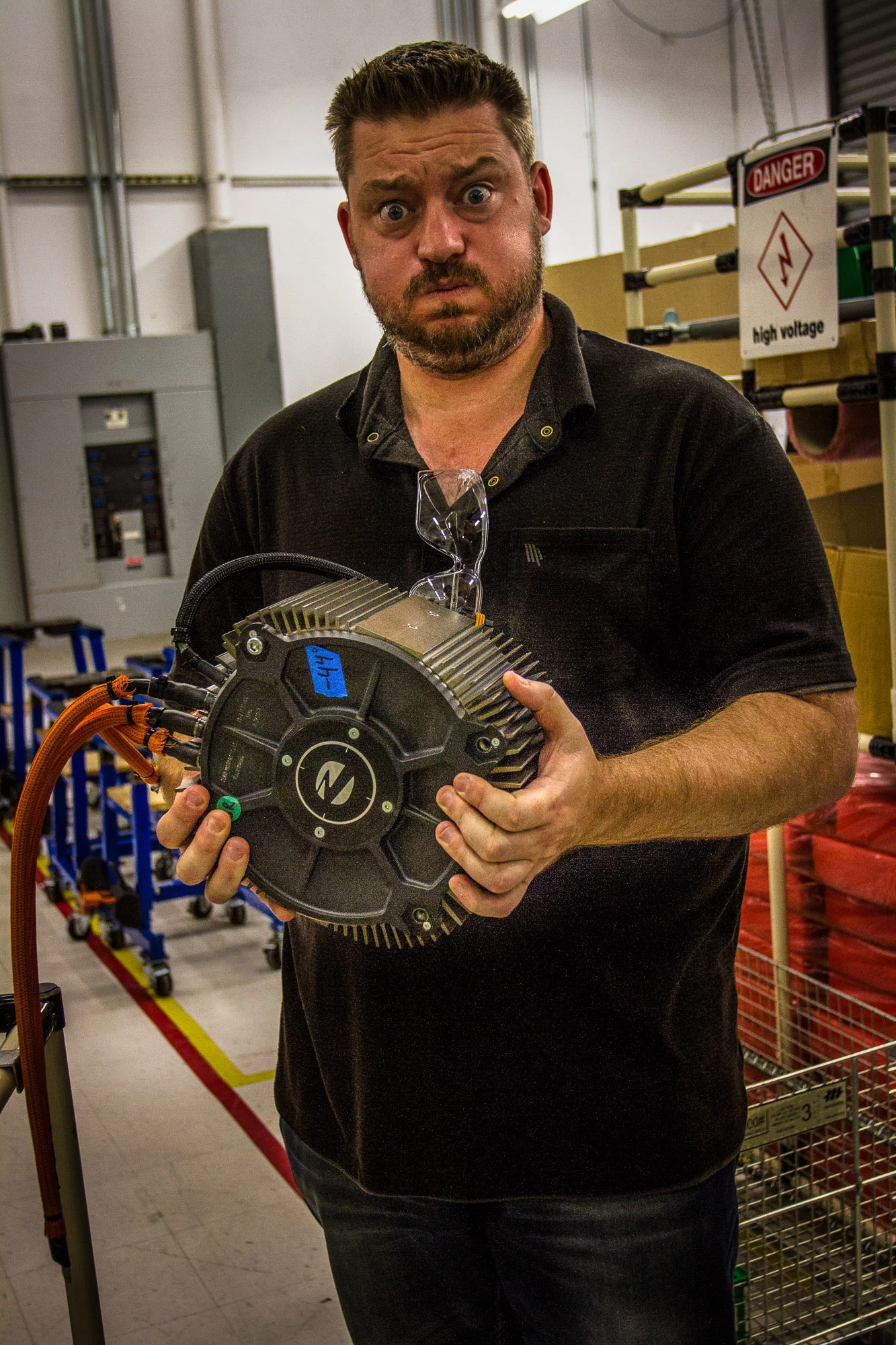Regular readers will know I'm a bit of a fan of Zero's electric motorcycles – as the market leader in performance electric two-wheelers, Zero offers a glimpse into a future where gasoline engines feel frankly archaic. So I was very excited to score myself an invitation to come and visit Zero's head office and factory to see where the company is at, get to know the Zero team, and ride the company's entire 2015 range through the breathtaking mountain ranges of California. It was a great chance to talk about batteries, production lines, the 2015 Zero range and how America's fast-charge infrastructure is letting riders down.

Zero comes of age
Fueled by a very impressive commitment from the New York-based Invus group, Zero Motorcycles has ramped up its production capabilities to become pretty much the only company manufacturing electric performance motorcycles at any kind of scale. Between Zero's home base outside Santa Cruz, California, and its small European office, the company now employs some 138 full-timers and has a capacity to manufacture between 15 and 18 bikes per day.
That's small bikkies in the world of manufacturing, but a major achievement in the performance electric motorcycle game. I specify "performance" because cheap electric scooters sell in the order of tens of millions of units in China, but these low-speed, low-range commuters are a world away from the type of high performance fun machines that Zero and other companies are trying to popularize in the West.
Over the last 12 months, as Zero doubled its sales across the board, the company has scrambled to transform itself into a volume manufacturer with room to grow. Using a Kanban-style Just In Time philosophy, the production line is now much more systematic and quality-focused.

With production volume comes economies of scale, but equally importantly, the ability to work with top-level parts suppliers. Zero's Chief Technology Officer Abe Askenazi found this out the hard way when he left Buell to join Zero.
"In my time at Buell, I developed some very close relationships with parts suppliers like Showa suspension," says Askenazi. "But when I came across to Zero in 2010 and called those guys, they wouldn't work with us. We were too small."
Some larger suppliers were happy to sell parts to Zero off the shelf, but not at the kind of prices a major manufacturer could command, and they weren't offering any engineering support to create components tailored to the Zero range. From OEM tires to brakes and electrical components, Zero had to work with smaller companies that were willing to play ball at smaller volumes.

So when you read that Zero's entire 2015 lineup now ships with Pirelli tyres, Bosch ABS systems, J-Juan brakes and fully adjustable, custom designed Showa suspension, it's more than just a running gear upgrade. It's a sign that after nearly nine years in business, Zero is starting to get some respect as a manufacturer.

Zero's battery advantage
Of all the electric performance bikes on the market, Zero currently gives you the best range. The high performance Zero SR that absolutely blew our minds last year can give you 185 miles (298 km) of riding out of a single charge from its 15.3 kWh battery bank if you've got the additional "power tank" plugged in. Naturally, that range varies wildly depending on how you ride the thing – and also how heavy the rider is.
If you ask a motorcycle buyer what their thoughts on electric bikes are, most will tell you range is one of their biggest concerns. This is why Zero is currently committed to its modular flat-cell battery architecture, in which 28 flat, 3.6 volt, 27 Ah Farasis Lithium-ion cells are stacked together into small 102-volt battery boxes.

A single battery box can be used on its own if it's fitted with a battery management system (BMS) and the associated plumbing. These modular batteries are used as the primary power source for the removable-battery FX bikes, and also as the supplemental "power tank" units for the S, DS and SR models.
The main battery units for the S, SR and DS bikes are "monolith" units which pack either three or four of these discrete boxes into the chunky battery box that sits where you'd expect the engine on those models. In the monolith configuration, the batteries can share a single BMS and associated hardware to keep weight down. Three boxes gives you a 9.4 kWh pack, four gives you the large 12.5 kWh pack. Both the modular and monolith units are assembled and tested in-house, including giving each battery an extended shower to test their wet-weather sealing.

Packing these flat cell pouches together, as opposed to using the cylinder-based cell architecture most other EV manufacturers are going with, lets Zero squeeze more energy storage into a given volume – and it also explains why Askenazi doesn't expect that cheap batteries from Tesla's Gigafactory are going to bring the cost of Zero bikes down any time soon. Tesla will be manufacturing cylindrical cells, because the size, shape and location of the battery is much less of a concern for an electric car than for a motorcycle.
Another problem with these cylindrical cells is that each cell has a lower discharge rate, or power capacity, than the Farasis flat cells. This means you've either got to put a lot of cells together in a very large pack to get a high power battery, or else settle for a low powered motorcycle.
This might help explain why bikes like KTM's Freeride E series have such disappointing range and power figures – they're using cylindrical cells with lower energy density than Zero's flat cell models. You end up with a lower range, lower torque, lower horsepower bike than the Zero FX, for a price that's still a couple of thousand dollars higher.
The problem with fast charge stations
A fully loaded Zero SR currently takes 10.5 hours to charge its 15.3 kWh combination of monolith battery and power tank if you're plugging it in to a regular mains outlet. This is clearly not a touring-friendly option. Aerodynamics boffins like Terry Hershner and Craig Vetter are pushing heavily modified bikes to extend their range figures, but getting the electrons in is still a laborious process.
Zero offers quick charger accessories. In the case of our maxed-out SR, a US$599 quick charger accessory could bring a full charge down to 6 hours. With multiple quick chargers you can bring your wait down to 2.8 hours, but that's dinner and a movie, not a quick fuel stop. And that's assuming you don't mind carting a stack of heavy, bulky quick chargers around.

With electric vehicles booming in California, quick charge stations are popping up along major routes to make longer range driving easy for the average Tesla or Leaf owner. Zero offers accessories that can connect your bike to a CHAdeMO- or J1772-spec charging station, but unfortunately, at this stage there's no guarantee a given charge station will work with your Zero bike.
The problem is voltage. Electric cars typically run at 200 volts or higher, where the Zero bikes run at a 100 volts. Since they're designed mainly with cars in mind, a given CHAdeMO fast charge station may or may not support 100 V charging – in the case of CHAdeMO, an Aerovironment or Nissan fleet charger will probably work, but an EVTEC or Blink Fast one won't, according to this electric motorcycle forum user, so unless you know exactly which voltages your local chargers support, the US$1799 CHAdeMO fast charge socket accessory is a bit of a gamble.

"It's frustrating," says Zero VP of Global Marketing Scot Harden, "we've designed our bikes to work with the existing CHAdeMO specification, which goes down to 50 volts. But whoever's building the charge station typically builds it just to work with their product – and there's no government agency out there running around checking for adherence to the spec."
So why not go up to a higher voltage that would work with the existing charging infrastructure? "If we went to 300 volts, it would hurt you on every front that matters," says Zero's Senior Battery Specialist Luke Workman. "We'd have lower efficiency, lower power, higher cost, higher drive train heat – and in terms of life safety for the guys that are working on these things, you go from a nasty tickle … to dead. The majority of electric vehicles that are using higher voltages are doing so simply because they've been designed using legacy equipment. You'll see a lot more EVs going low voltage in the future."
In the meanwhile, Zero is taking an active role in trying to push adherence to fast charging standards. "We're on the committee for the IEEE P2030.1 DC fast charging standard," says Zero's Head of Electrical Engineering Kenyon Kluge. "Our goal is simply to push for compliance with the spec that already exists."
So there may eventually be a light at the end of the tunnel for Zero owners interested in fast charging, whether it comes from a standards-based push for charger compliance, or from a movement within the electric vehicle industry to the safer, cheaper and higher performance low voltage specification. But for now, you'd better have a good understanding of your local charging infrastructure before you commit to a longer trip.

Zero's 2015 Range
While it was fascinating to take a trip through Zero's impressive factory floor and speak at length with its business and technical leadership, the star of the show was certainly the 2015 Zero test fleet.
The range is split into 4 bikes – the S streetfigher and its high-powered SR brother, the DS dual-sport machine and the very naughty, dirt-focused FX. Zero CEO Richard Walker told us that sales are evenly split among the four models: "each model represents between 20-30 percent of sales. We feel like we've got the product mix right at this point."
One thing, of course, does seem to be missing – an aerodynamically faired sportsbike or tourer that could squeeze even more out of the battery. And that's something Zero is considering.
"There's a number of discussions going on about derivations of the current platforms," says Harden. "If we did nothing else, we could put a fairing on and increase our range by 30 percent."
So presumably we can expect something along those lines down the track as we enjoy this year's S, SR, DS and FX.
Among the great Californian redwoods, along the sweet-smelling clifftops of Santa Cruz and up the soaring ridges of the famous Skyline road to Alice's restaurant, we had a chance to get a gumboot up the entire Zero range on a two-day test ride. Stay tuned for the results!
Thanks to Zero Motorcycles.




















































